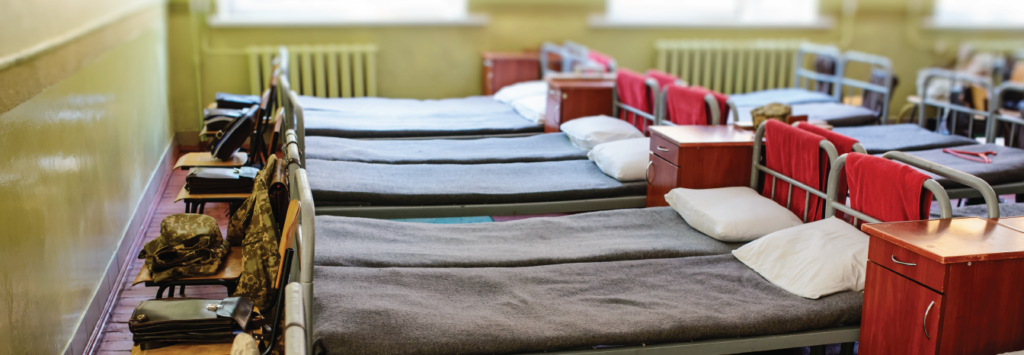Conflict, flood, earthquakes, droughts, wildfires, poverty – just some of the areas where humanitarian aid is needed. Unfortunately, these crises are on the rise, with an average of 412 disasters per year between 2010-2020, compared to 289 between 1980-1990. The rise in tensions across nations causes political conflicts, which in turn can escalate to war, natural disasters the result of climate change and poverty due to the ongoing issue of inequality – now leaving 274 million people worldwide needing humanitarian aid – equivalent to 1 in 29 people.
Short term humanitarian aid and longer-term development assistance are usually considered separate entities but are two sides of the same coin and both are required more and more throughout the world. With crises and conflicts becoming increasingly complex and unpredictable, these needs are overlapping more frequently.

A Hybrid Need
Take the Ukraine crisis for example. In the first month, emergency aid was critical to support the 6.5 million people who became displaced and the 3.7 million people who were forced to flee neighbouring countries. Now, over 8 months into the conflict, there is a hybrid situation, in which emergency aid is still needed to support those living on the front line or fleeing the ever-changing invasion, but long-term development assistance is needed in liberated towns and cities to support those people returning home to rebuild their lives.
Combine this with new and ever-changing complexities, from supply chain issues to the safety of humanitarian aid workers to the rise in disaster and conflict, innovation in this sector is needed more than ever, both from a logistical and procurement point of view to ensure as many lives as possible can continue to be saved.
While preserving life is the number one priority in the critical response sector, there is also a consideration for the impact on the environment and the planet. Innovation in products, manufacturing and distribution methods are also key in helping to tackle the issue of global warming, with global logistics contributing to 24% of emissions – it is important to innovate and work towards the solution, and not become part of the problem. This also goes for the products themselves, and the ability to recycle and reuse all elements.
Over two decades ago, RUTF (Ready-To-Use Therapeutic Food) was an innovation that if delivered quickly and effectively, would save the lives of 90% of malnourished children. Whilst this is a perfect example of reactive innovation, there is now a need for proactive innovation – not necessarily in the products themselves, but how they are packaged and distributed. Consolidating essential humanitarian products into specific kits, not only benefits the people in need by allowing faster distribution, but also means humanitarian workers can mitigate risk by working quicker and more efficiently. This is especially relevant in areas of conflict – Ukraine being a prime example, where aid workers, warehouses and distribution lines are a target. It’s also relevant to areas of infectious diseases in underdeveloped countries – such as the Ebola outbreak in West Africa in 2013-2016 and more recently the COVID-19 pandemic.
There is also the question, that with advances in online technology and the sharing of information worldwide, could now also be the time we start to prepare for a humanitarian crisis, before it happens? Could we, from a procurement and logistics aspect, identify, strategise and mobilise supplies into position in a timely manner, rather than responding to NGOs acting in the immediate aftermath?

How Are Dependall Innovating?
With a logistics background, we understand the challenges faced throughout a whole variety of distribution channels, and how to move things around the world effectively and efficiently.
No crisis is the same. The immediate need of people affected by war differs from those affected by a flood, while there are some crossovers, there are equally major differences. Instead of just deploying a standard range of products, we have worked to produce pre-determined strategies and critical product packages for each type of crisis – meaning lifesaving products tailored for specific disaster types can be deployed almost instantly. Our packaging innovations make ‘last mile’ delivery easier and faster, while maintaining our commitment to sustainability.
Our rapid response team will respond to you within one hour, followed by an end-to-end response plan in just six hours. This doesn’t just apply to essential life-critical products, but also anything along the whole spectrum of humanitarian aid and development assistance. We have a global network of suppliers and warehouse facilities, meaning we can source and procure products quickly and effectively, and get products where they are needed whilst minimising our carbon footprint.
Not only are we committed to innovation and sustainability, but we pledge to supply essential living products to 1.5m displaced persons by 31st December 2025. We are committed to utilising a minimum of 10% local manufacturing capabilities, where possible in the countries of need, to invest in their economies.
Get in touch with our team on 0333 240 0780 or email [email protected]





